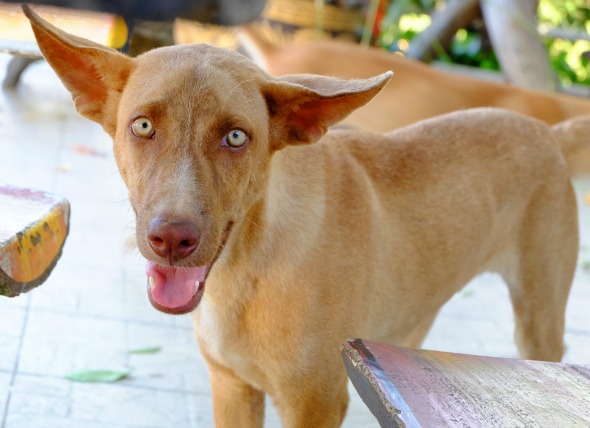

While anal gland/sac cancer (adenocarcinoma) is not common, it is an invasive disease that does not generally have a positive outlook. Usually seen as a rectal growth (mass) on the animal, it also is common to find the disease in the lymph nodes. Due to the type of disease, it is typically malignant and can spread quickly into other areas of the animal's body. There are treatment options available, normally surgical, that can help to improve the animal's chances of survival.
The condition or disease described in this medical article can affect both dogs and cats. If you would like to learn more about how this disease affects cats, please visit this page in the PetMD health library.
The most common sign of anal gland cancer is a rectal mass or tumor. The tumors are often small in nature. In addition to the visible signs of a tumor, animals who are suffering from the disease may be constipated or have difficulty defecating (obstipation), anorexia, polydipsia, and may seem lethargic.
While this disease is common in dogs, it is not common in cats. There is currently no breed that is a most prone to this type of cancer. The disease is often associated with a hormone imbalance (parathyroid), as it is often found in the anal area. It is also linked with hypercalcemia in the animal's body.
A fine needle is inserted into the cancerous anal mass (aspirate) and the cells are examined to rule out any other possible conditions. It can be challenging to determine whether the mass is malignant or not, so the needle biopsy is a useful diagnostic test. In some cases an incision and a full biopsy are needed to properly diagnose the mass. Some veterinarians will also use imaging to look at the mass, such as X-rays or ultrasounds.
The proper course of treatment is to surgically remove the tumor. The removal of the tumor and infected lymph nodes can prolong an animal's life. However, the tumor's removal is not a cure. Radiation is also used to help with locally recurring tumors.
After the tumor is removed, it is advised to continue monitoring the animal through physical examinations, X-rays, ultrasounds, and blood work. Calcium and kidney tests also work in monitoring the disease and its potential recurrence. The overall prognosis for the disease is poor, although surgery can substantially improve the opportunity for recovery.
Due to its nature, there is currently no way to prevent the disease.
 Front Leg Deformity in Dogs
Antebrachial Growth Deformities in Dogs
On occasi
Front Leg Deformity in Dogs
Antebrachial Growth Deformities in Dogs
On occasi
 Bone Deformity and Dwarfism in Dogs
Osteochondrodysplasia and Achondroplasia in Dogs
Bone Deformity and Dwarfism in Dogs
Osteochondrodysplasia and Achondroplasia in Dogs
 Antibiotic-Resistant Infections in Dogs
Methicillin-Resistant Staph aureus (MRSA) Infection in D
Antibiotic-Resistant Infections in Dogs
Methicillin-Resistant Staph aureus (MRSA) Infection in D
 Safety Tips for Using Heartworm Preventive Medications on Dogs
Proper Application of Dog Heartworm Prevention Med
Safety Tips for Using Heartworm Preventive Medications on Dogs
Proper Application of Dog Heartworm Prevention Med
 Anemia (Methemoglobinemia) in Dogs
Methemoglobinemia in Dogs
The purpose of hemoglob
Anemia (Methemoglobinemia) in Dogs
Methemoglobinemia in Dogs
The purpose of hemoglob
Copyright © 2005-2016 Pet Information All Rights Reserved
Contact us: www162date@outlook.com